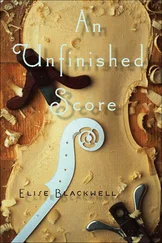Describing a “treatment strategy” prescribed by a hypnotherapist, Flynn is reminded of Buster Keaton’s Sherlock, Jr. , in which Keaton plays a projectionist who falls asleep while showing a movie, finds that the actors in the movie are people he knows, and, ultimately, joins them onscreen. The hypnotherapist’s treatment asks the client to imagine himself in a movie theater, in front of a movie of his own traumatic experience, in control (as projectionist) of the speed and direction of that movie. This, Flynn is told, allows the client to separate the associations that have built up, to remove or at least divide the traumatic memory from the words that describe it. Flynn is not so sure: “Even if you rewrite the trauma. in the end she will still be dead.” But the purpose of the treatment is not to alter the past — that would be impossible — it is to make the present bearable, to make the past past, to allow it to pass.
…
Under normal circumstances, your memories of daily events are consolidated. by an area of the brain called the hippocampus. But during frightening situations — such as a car accident or a robbery — another area, the amygdala, also lays down memories along an independent, secondary memory track. Amygdala memories have a different quality to them: they are difficult to erase and they can pop back up in “flashbulb” fashion — as commonly described by rape victims and war veterans. We’re not talking about a memory of different events, but multiple memories of the same event — as though two journalists with different personalities were jotting down notes about a single unfolding story.
(David Eagleman, Incognito: The Secret Lives of the Brain )
…
History decomposes into images, not into stories.
(Walter Benjamin, The Arcades Project )
…
Our desires have found and will find no real echo in the world. “The people we love do not love us, or not in the way we hope,” Sandor Marai says.
…
If we view ourselves from a great height it is frightening to realize how little we know about our species, our purpose, and our end.
(W. G. Sebald, The Rings of Saturn )
…
Our sense of time — how much time passed and what happened when — is constructed by our brains. And this sense is easily manipulated, just like our vision can be.
(Eagleman, Incognito )
…
Towards the end of my certificate program, I had to go to San Francisco on consecutive weekends, for the firm. I didn’t like these trips. They made me nervous. I would fly down on Thursday night or Friday morning, and then I would have to wait until Monday to finish my business. I usually stayed in the hotel all weekend and watched tv. I brought books with me and read them in restaurants and on the street, walking to the restaurant. Anything to keep from seeing him on every corner, her next to him. Thousands of hims. Thousands of hers. My wife invited herself down for the second of the two weekends. The hotel was going to be taken care of by the firm anyway, she said, and why would anyone care? Besides, I wouldn’t be working Saturday or Sunday. I told her it wasn’t allowed. While I was in class, she talked to her friend, and when I got home the first thing she said was, Guess who’s going to San Francisco?
I went on my own the first weekend and stayed in the firm’s shared apartment, in Nob Hill. No one was staying there, and hotel rooms were scarce that weekend because of the Folsom Street Fair. The apartment was beautiful, with two bedrooms each with their own bathroom, hardwood and marble everywhere, and even a fancy coffee-maker nicer than the one in the office. The picture windows faced up the slope, with Coit Tower in the center. I pulled the blinds shut and kept them shut all weekend, but I couldn’t help myself and I looked up the tower on the internet. I could see a picture of a few people frozen at the base on Google Maps. Wikipedia told me it had been built by Lillian Hitchcock Coit, no relation. Apparently, Ms. Coit had an affection for firemen, and designed the Tower to resemble a firemen’s hose.
On Sunday morning, my wife called to tell me there had been a huge fire across the street from our apartment building, in a new building that had only just been completed. Though the building was only four stories high, the flames had apparently reached fifteen stories, and the entire building was reduced to debris. All of the streets in our neighborhood were blocked off, and fire engines and cranes with water extensions had been spraying the site all night and all morning. She said that when she had passed by that afternoon while walking the dog, she could still feel the heat coming off it.
When we returned to San Francisco the following weekend, the apartment I had used the week before was taken by someone more important than me. The firm put us up in the usual hotel, south of Market, but I begged my wife to get out of the city. We decided to rent a car and drive south along the coast, though actually I cannot recall deciding this. I only said, We’ve already seen everything in the city. Maybe we should stay in, or leave the city altogether. This drive was either my wife’s idea or the concierge’s, and I think I must have objected, perhaps even refused, but, either way, I found myself behind the wheel of the rental car, having passed over the Bay Bridge into Oakland and down through San Jose, cutting across the mountains to Santa Cruz, where we would meet up with Highway 1.
…
Man is equally incapable of seeing the nothingness from which he emerges and the infinity in which he is engulfed.
(Blaise Pascal, Pensees )
…
In October of 1979, a woman named Jane or Janie Wilmot climbed over the railing of the Golden Gate Bridge onto the metalwork below. Just past her toes there was nothing at all for 245 feet or four seconds, all the way down to the water. A man climbing over next to her — did he say anything to her? — tripped over something and let go of the railing. He fell over backwards, out into the air. Up on the bridge, it would have been impossible to hear the splash four seconds later. A second man, wearing a top hat and a tailcoat, toasted Wilmot with a flute of champagne. She jumped, and in that moment, Wilmot became the first female bungee jumper. A camera crew on the bridge captured several jumps, then, with the police on their way, got on their bicycles and rode south, towards the city. They stopped at Fort Point to film the cords hanging from the bridge, standing in the spot where Madeleine and Scottie had stood twenty years earlier. By the time the crew got to Fort Point, though, Wilmot had already entered the water and been rescued by boat.
…
Garrett Soden, author of the book Falling: How Our Greatest Fear Became Our Greatest Thrill , likens a long fall to a three-act tragedy: “the leap, the fall, the impact.” He writes, “The second act functions as it does in any tragedy: it reveals that the victim’s moral failure will lead to a horrible end — and that nothing can be done to stop it.” Is the fear of heights then ultimately a fear of being discovered (by oneself), of having one’s moral failings put on display (to oneself)? Is Scottie’s acrophobia just a symptom of his guilty conscience? And guilty of what? Why?
…
During the construction of his famous Tower, Gustave Eiffel wrote, “Whether a man fell from forty meters or three hundred meters, the result was the same — certain death.” So, for those of us afraid of heights, afraid of falling, it is not the result that worries us; it is the length of the fall leading up to it. Perhaps we fear what will go through our minds in those moments. We fear the fear of death more than we fear death itself. Our minds, it would seem, turn in upon themselves naturally.
Читать дальше












